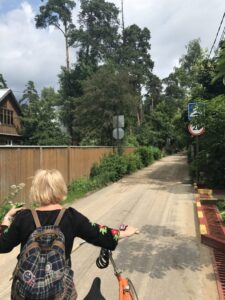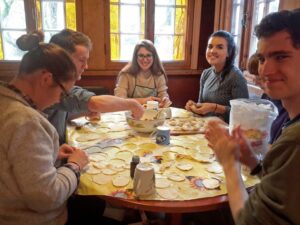The following bilingual Russian MiniLesson is meant to build your vocabulary by providing Russian phrases within English text. Hover over the bold Russian to reveal its English translation.
It’s in Russia. Dachas have existed for centuries, surviving revolutions, purges, and economic and political collapses. Dachas remain an integral, if at times hard-to-define part of Russian life; some Russians scoff at them, many hold them dear, and many, oddly, do both. Yet “dacha season” remains so widespread that stores announce (for which building and gardening equipment are discounted) in ads nearly as large and pervasive as those for “back-to-school” in America.
The word has made significant inroads into English because, although it can theoretically be translated as “summer house,” or “cottage,” the dacha is not necessarily , or even a that those translations would imply.
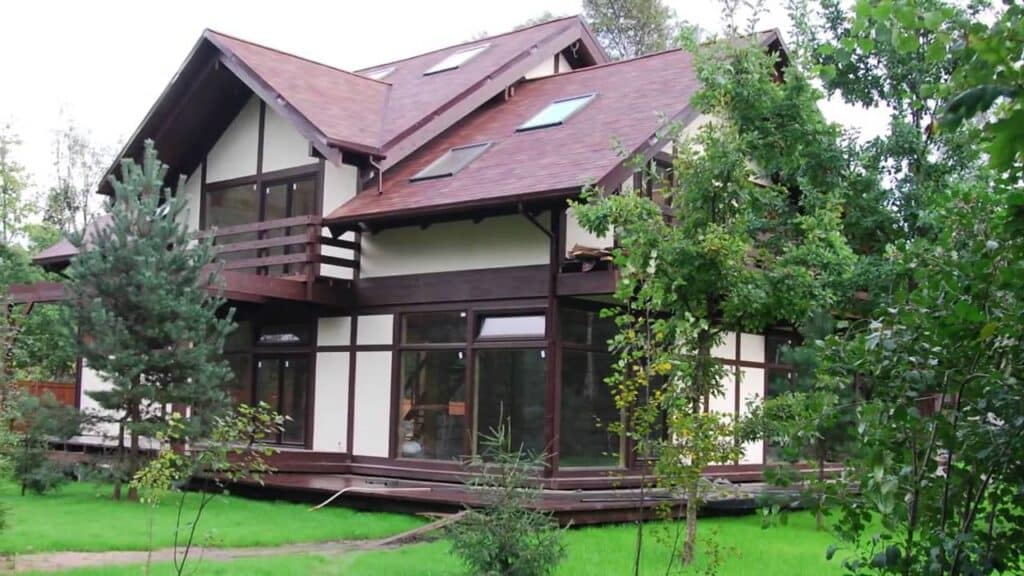
Although many Russians now drive to their dacha, the dacha’s distance from the city was once most often measured in hours. A 1-2 hour ride was and still is common. Even after Russia’s booming car markets of the 2000s saw the streets of Russia’s major cities flood with cars, are still often overcrowded with people of almost every social class and, we have seen, even the occasional livestock. For those fortunate enough to own a car (it is fairly common to have a dacha, but no car), the trip can take twice as long, as the roads are not built to handle the mass exodus that occurs every weekend from the city.
To look back in time, the term “dacha” was born of early medieval Russian. It meant “ and later came to specifically mean “.” A dacha could include land, houses, outbuildings, , etc. It was the main unit of property right up until emancipation radically changed property concepts in 1861. The massive social changes that emancipation set in motion can be seen, for instance, coming to fruition a few decades later in Chekhov’s The Cherry Orchard. In modern Russian, the feudal conceptualization is better described with “” rather than “dacha.”
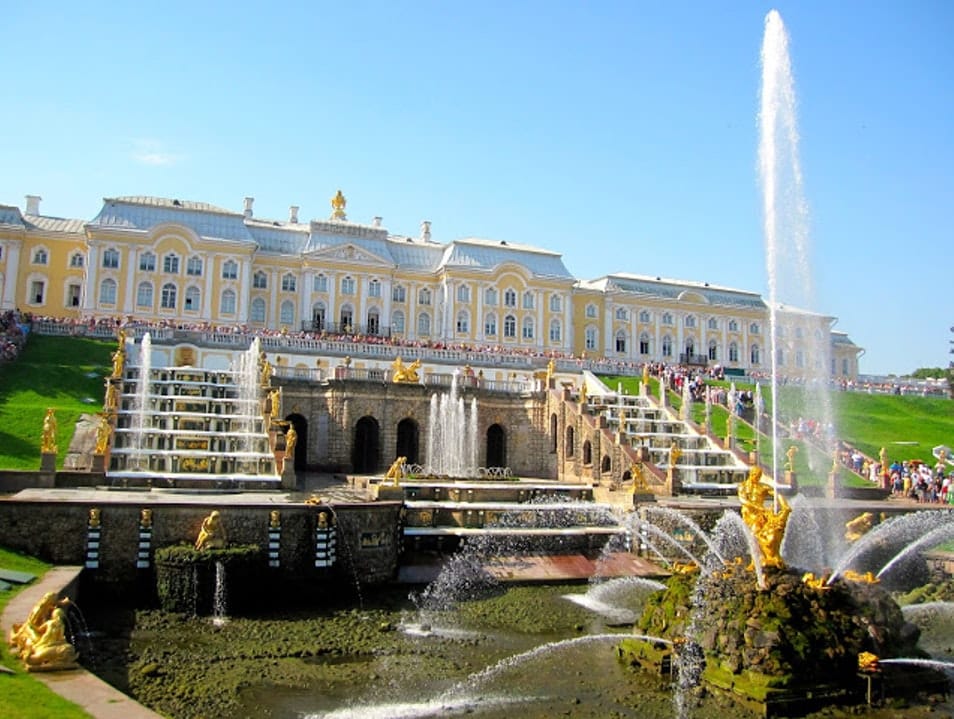
Peter the Great altered the meaning of “dacha” greatly. After the Great Northern War, armed with expanses of new land and a desire to create a that would run from St. Petersburg to the royal dacha of Peterhof, Peter gave out tracts of land bordering the Gulf of Finland, instructing the recipients to build grand houses and sculpted gardens. These new dachas would be used primarily . The owners were expected to maintain city residences as well.
Peter the Great’s . It also led to a rapidly growing and thus bustling, expensive, and dirty St. Petersburg. In response to demand for land outside the city by these up and coming middle class Russians, the real estate market liberalized, and government workers and small businessmen also entered the ranks of dacha holders.
It was then that the word “dacha” came to mean “summer house.” A building boom ensued, forming communities of dachas. The craze even hit the working class, who rented rooms or () in other people’s dachas for a few rubles in the summer so that they too, might enjoy the dacha experience. By 1850, became a staple of Russian literature, often satirized as lazy or, alternatively, revered as Russia’s newly cultured class.
After the October Revolution, many people took the communists at their word that land should be communal and marched into the countryside to build small dachas with garden plots wherever someone else was not already living (and sometimes where they already were). The reason for this is clear: ; people were just trying to survive and, to do so, they needed to grow food.
Steven Lovell, in his award-winning Summerfolk, a History of the Dacha, understates this unofficial and undocumented process, but it seems to have not been uncommon. He states that a fair number of . There are also many Muscovites who claim their family dachas were built in this manner.
The main controversy revolved around whether the dacha should be part of the bourgeois past or the communist future. Although a policy was never officially spelled out, dachas were placed under the control of district committees known as “” or “” for short, and thus effectively legitimized but with restrictions: each family was allowed only one dacha and “lordly” dachas, defined as those , were forcibly nationalized.
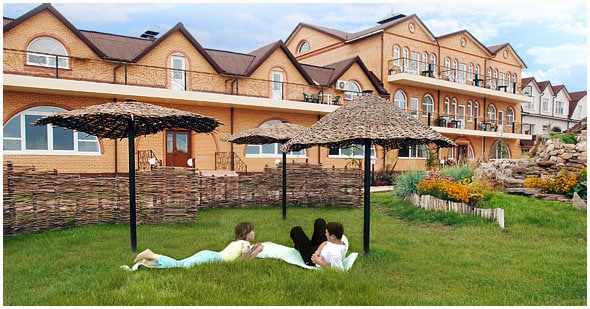
Soon, more and more individuals as well as unions and enterprises sought dacha space, which became seen as a status symbol and was soon a common company perk in high demand. Outbuildings at some dachas were re-classed as separate dachas and given to new residents. Several country estates were turned into , which functioned essentially as communal dachas. These still exist today as state-operated or private enterprises similar to resorts or spas. Many still offer , as well as large grounds on which to stroll, breathe fresh air, take in sun, and gain light exercise.
New dacha construction under the Soviets was entrusted mainly to housing cooperatives.
(). For example, funding to build the writers’ colony at Peredelkino was freed shortly after the Union of Soviet Writers adopted an official, state-friendly genre. Afterwards, only writers in good standing with the state received dachas there. Political meetings from the local to the national level were often charged with accusations of (a Russian word referring to systematized bribe-taking and favor-playing), in connection with dacha allocations. Alexei Pankin, the opinion page editor for Izvestia, even proposed a “Dacha Theory of History,” in which he asserted that .
The dacha remains a symbol of agriculture and self-sufficiency. Russia is prone to dramatic economic ups and downs. As the 2008 crisis settled in, many Russians invested in to expand their home vegetable production. They are now common dacha features, with multiple local companies manufacturing and selling them.
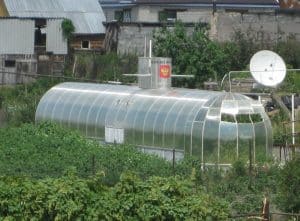
Demand continued to swell and the dacha solidified as a cultural icon despite the fact that most were poorly built, even unsanitary structures. They were and today sometimes are still “summer houses” because they lack central heating and are thus largely unusable during the winter. Many Westerners might also find it strange that Russians would commute from the city to the countryside (the opposite from the Western practice) in order to visit such places regularly.
The 1990s, with the , saw Russians again head to the countryside to build dachas and tend gardens to ensure that they could put food on their own tables. At this time, laws changed rapidly and were often poorly enforced. Many dachas built in the 1990s or even early 2000’s were . As the state sought to assert control in the late 2000’s, and as Moscow’s continued expansion led to greater demand for land outside the city, many dachas were forcibly torn down by the Moscow authorities.
As the Russian economy expanded with private enterprize, dachas became more civilized structures. Companies sprang up offering kit homes, ready to be assembled with central heating and plumbing already installed. Many young Russians began to think of a dacha more as a summer home, as a place of relative affluence where vacations are taken and gardening was . Some young Russians even came to insist that the dacha was a realm of elderly pensioners, who used them to bolster their meager state-provided funds.
In reality, the dacha is all these things today: . Although many dachas are essentially suburban homes today, business news in Russia regularly talks about the effect that dacha owners have on the price of fruits and vegetables during the summer growing season. Russians who feel economically pinched will often make plans to expand a dacha garden as an obvious cost-saving or even income-generating measure.
Particularly around large cities, dacha communities are still growing rapidly, even despite (or perhaps because of) the recent economic crises. These are turning rapidly into suburban communities, although ones that often struggle with maintaining their infrastructure. For more on modern dachas and their construction, which are still plauged by legal ambiguties, click here.
For many Russians, the dacha is still a home-away-from-home. Every weekend, many don and weed and care for their vegetable patches. They . To many, the dacha represents a , to their roots and the ways of their forefathers.
The fact that the question ” will spark a sometimes-heated cultural discussion among Russians is fascinating in and of itself. However, most Russians, no matter what their current impression of what a dacha is, will agree that the dacha is an important part of . It will likely remain so for a long time to come as well.


